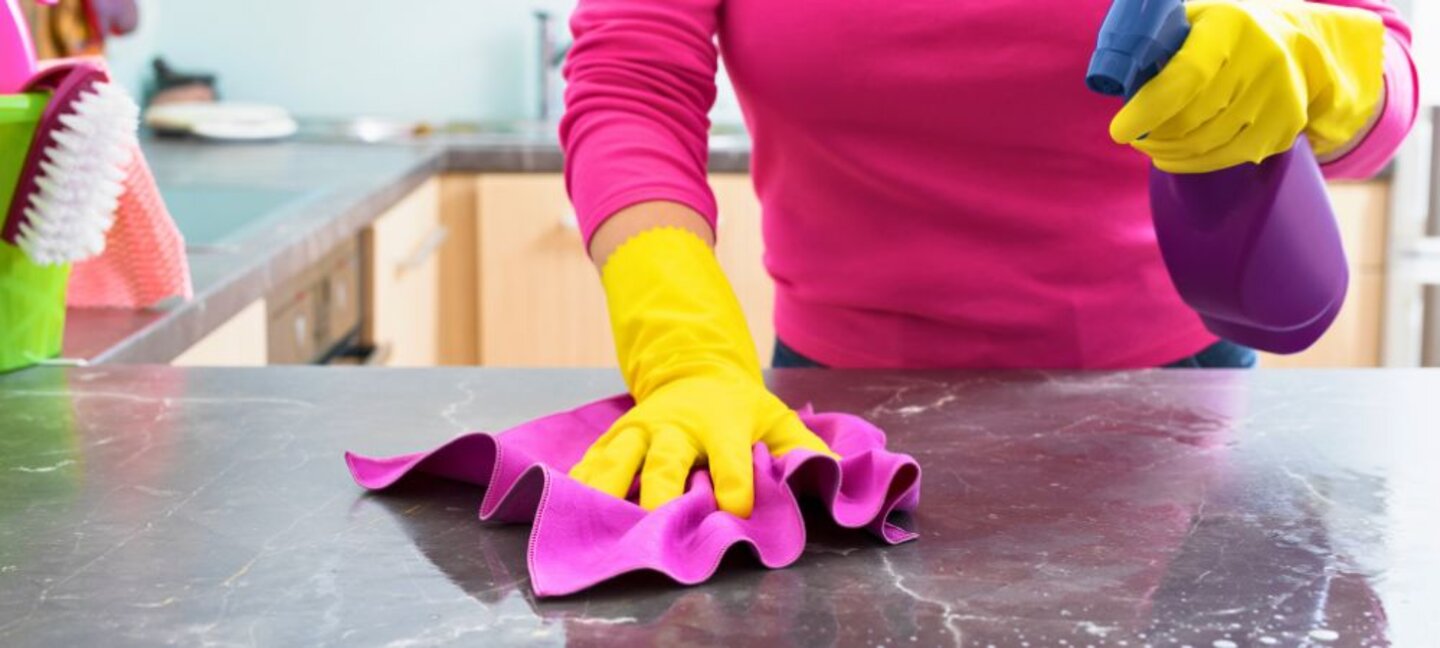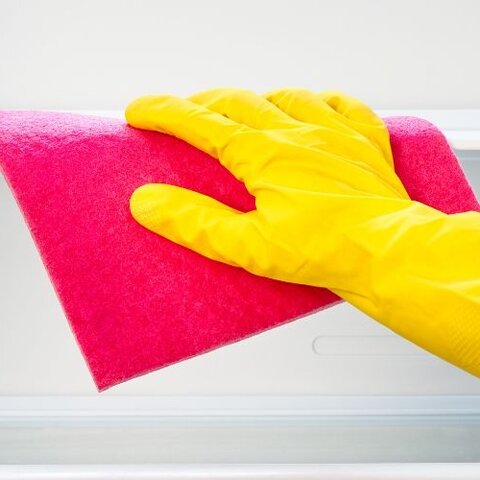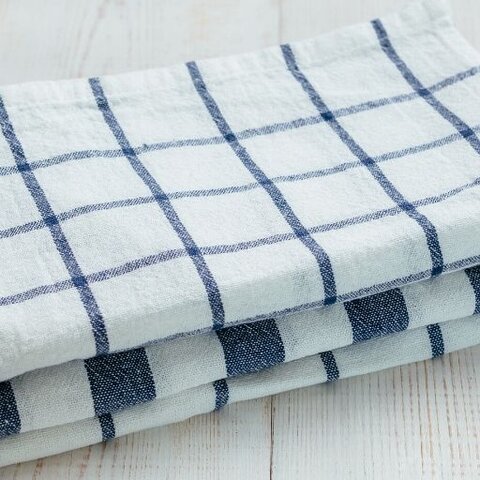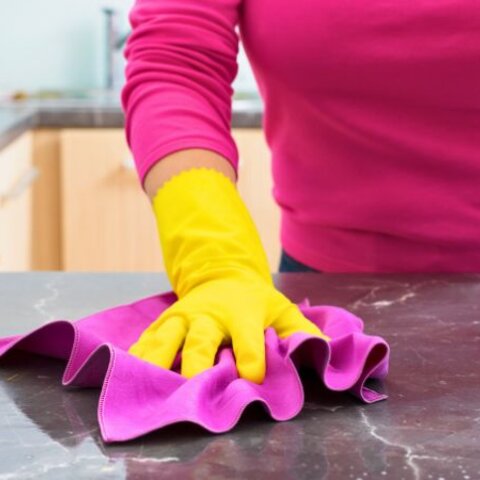
After facing an emergency like a flood, the cleanup process can feel overwhelming. Begin by discarding any food in the kitchen that might have been exposed to flood water.
- Throw away any food that is not in a waterproof container if there is any chance that it has come into contact with flood water. Food containers that are not waterproof include those with screw-caps, snap lids, pull tops, and crimped caps. Also, discard cardboard juice/milk/baby formula boxes and home canned foods if they have come in contact with flood water, because they cannot be effectively cleaned and sanitized.
- Inspect canned foods and discard any food in damaged cans. Can damage is shown by swelling, leakage, punctures, holes, fractures, extensive deep rusting, or crushing/denting severe enough to prevent normal stacking or opening with a manual, wheel-type can opener.
Cleaning and Sanitizing
Cleaning and sanitizing your kitchen is important to help prevent the spread of illness and disease. Take steps to safely clean and sanitize, especially when using bleach.
Recommendations for Using Bleach:
- Never mix bleach with ammonia or any other cleaner.
- Wear gloves, rubber or non-porous boots and eye protection.
- Try not to breathe in product fumes. Open windows and doors to allow fresh air to enter.
| Items to be Cleaned | Cleaning Steps | Amount of Bleach* | Amount of Water |
|---|---|---|---|
| Food surfaces that may have touched floodwater (e.g. countertops, utensils, plates) |
|
1 tablespoon | 1 gallon |
| Food cans that are not bulging, open, or damaged |
|
1 cup | 5 gallons |
Sources:
Clean and Sanitize with Bleach, Centers for Disease Control and Prevention (CDC)
Keeping Food Safety During an Emergency, United States Department of Agriculture (USDA)
This article was written in 2024. It has been peer-reviewed.
Tags:


